The Milky Way Galaxy
All-sky maps and images

Visible light - color photograph composite.
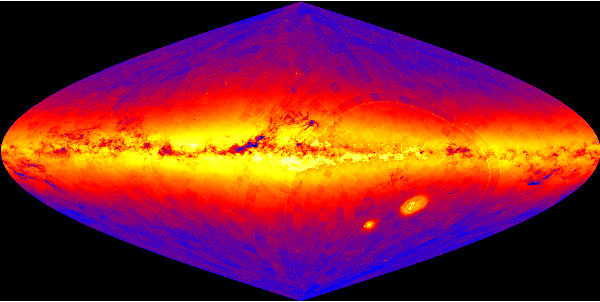
Visible light - map of star counts by U.S. Naval Observatory.
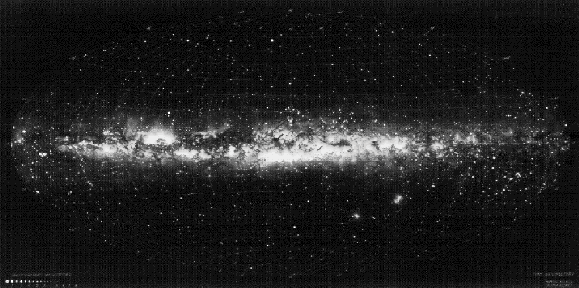
Visible light map/drawing of the Milky Way.
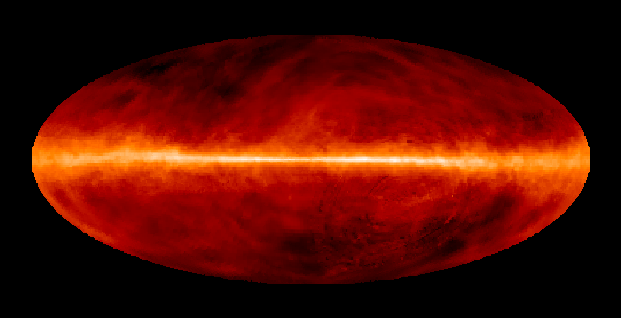
Radio wavelengths. 21-cm radiation from neutral atomic Hydrogen.
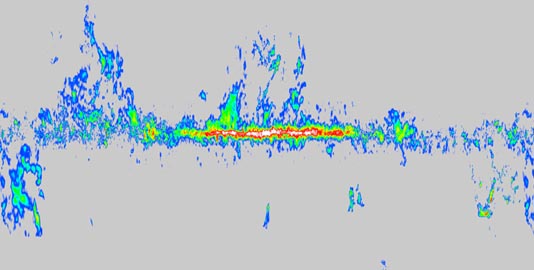
Radio wavelengths. Carbon monoxide emission from very cool, dense regions.
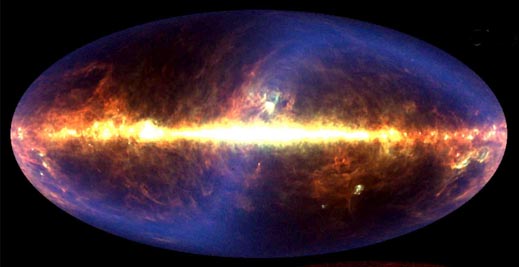
Infrared emission. IRAS satellite.

Infrared wavelengths: COBE satellite.
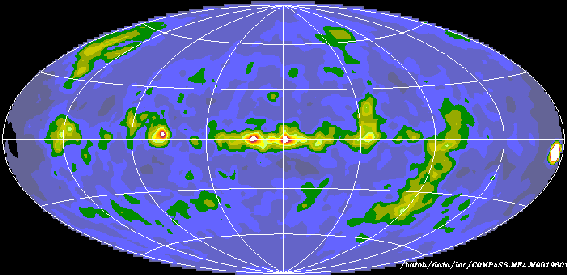
Gamma Rays. COMPTEL instrument aboard Compton Gamma Ray Observatory.

Gamma Rays. EGRET instrument aboard Compton Gamma Ray Observatory. Some of the sources are known pulsars, supernova remnant, or suspected black holes, but many are active galactic nuclei far outside our Milky Way, and many sources are not yet identified at other wavelengths.
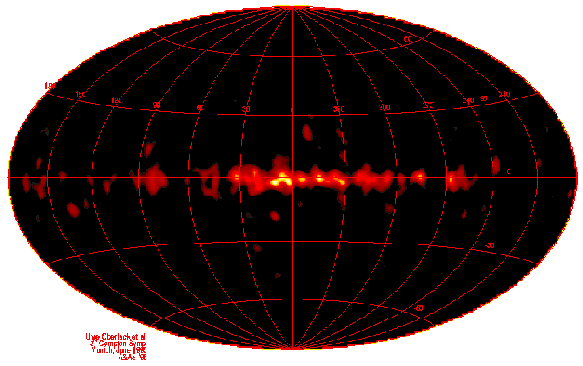
The Milky Way in the light of radioactive Al26 gamma rays. (Al26 decays to Mg26 with half life about a million years. Common Al is Al27, and is not radioactive.) COMPEL instrument aboard Compton Gamma Ray Observatory.
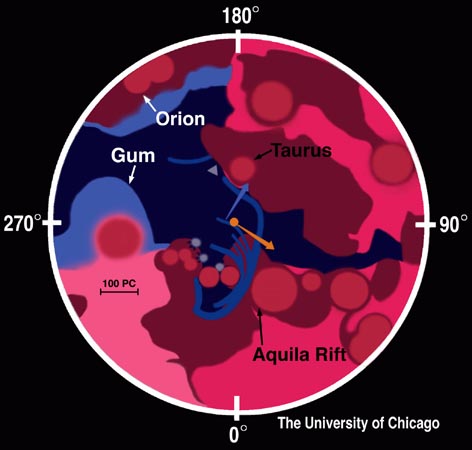
An inferred map of the (optically invisible) insterstellar medium in a 500-parsec radius around the sun. Nearly spherical bubbles
surround regions of recent star formation. The purple filaments near
the Sun are gas shells resulting from star formation 4 million years
ago in the Scorpius-Centaurus Association, located to the Sun's lower
left. The orange dot is the sun, with an arrow showing its direction of motion.
Last modified: Tue Nov 9 12:33:07 CST 1999